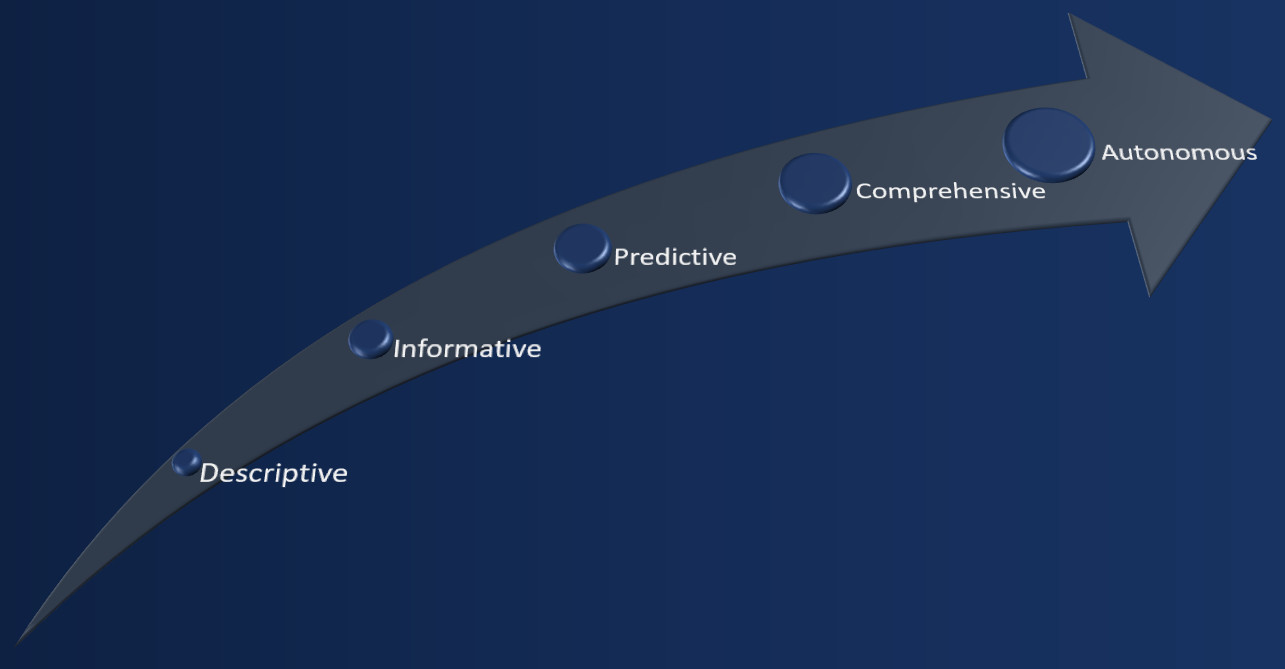In an era of rapid technological advancement, digital twins have emerged as a cornerstone of asset management, revolutionizing the way we visualize, predict, and optimize the performance of physical assets. The Digital Twin Consortium has defined five distinct levels of digital twins, each representing a different stage of sophistication and integration. Let's embark on a journey through these five levels to understand their capabilities and the potential they hold for various industries.
Level 1: Descriptive Digital Twin
At the foundation of the digital twin hierarchy lies the Descriptive Digital Twin. This level offers a visual replica of a physical asset, often created using Computer-Aided Design (CAD) software or Building Information Modeling (BIM). It provides essential information about the asset's geometry and materials. Descriptive digital twins are primarily used for visualization, planning, and communication purposes.
Level 2: Informative Digital Twin
Moving up the ladder, the Informative Digital Twin is a Descriptive Digital Twin elevated by real-time data from sensors and various sources. This infusion of data allows for continuous monitoring of the physical asset's condition and performance. Informative digital twins are instrumental in predictive maintenance, asset optimization, and informed decision-making.
Level 3: Predictive Digital Twin
The Predictive Digital Twin takes a significant leap by incorporating machine learning and artificial intelligence. It analyzes historical data to identify patterns, enabling it to predict the future behavior and performance of the physical asset. Predictive digital twins find applications in risk mitigation, capacity planning, and supply chain optimization.
Level 4: Comprehensive Digital Twin
Comprehensive Digital Twins take digital twin integration to new heights. These digital twins are predictive by nature and are deeply integrated with other systems, such as Enterprise Resource Planning (ERP) and Customer Relationship Management (CRM) systems. This integration empowers comprehensive digital twins to optimize entire business processes, making them pivotal in the realms of digital transformation, innovation, and disruption.
Level 5: Autonomous Digital Twin
At the apex of digital twin evolution lies the Autonomous Digital Twin. This digital twin possesses the ability to autonomously make decisions and take actions on behalf of the physical asset. While still in the early stages of development, these autonomous digital twins hold the potential to revolutionize how we interact with the physical world. They can automate complex processes and optimize operations in real-time.
Conclusion
Digital twins have become a formidable tool for enhancing the efficiency, reliability, and sustainability of physical assets. The five levels of sophistication of digital twins serve as a framework for understanding their evolving capabilities and the range of benefits they bring. As digital twin technology continues to advance, we can anticipate even more innovative and transformative applications in the years to come. The journey of digital twins, from mere visualization to autonomy, promises to reshape the landscape of asset management and optimization across industries.





